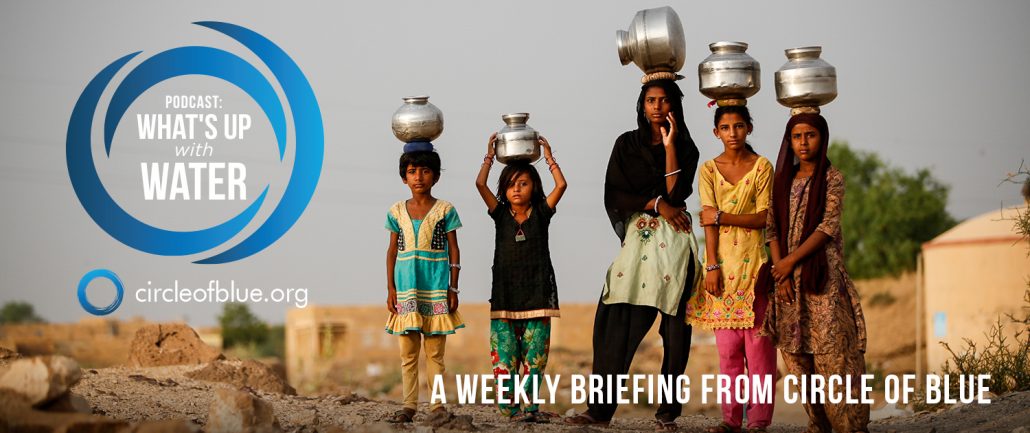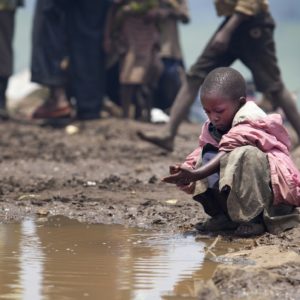
Transcripts
What’s Up With Water for May 14, 2018
Water-related terrorism is increasing – that’s according to a new global analysis from a research team at Florida International University. In a report published by the Woodrow Wilson International Centers for Scholars, the researchers used the Global Terrorism Database to analyze over 170 thousand terrorism incidents between 1970 and 2016. In that period, water-related terrorism increased by 263 percent. Most of the incidents happened after 9/11, and South Asia had more incidents than any other region.
The most common terrorist tactic has been attacking infrastructure, such as pipes, dams, reservoirs, levees and treatment systems. These targets are intended to destabilize governments, pressure populations and undermine businesses.
The organizations with the most water-related attacks include ISIL, the Taliban, Columbia’s FARC and the Shining Path. The researchers created profiles for these groups in order to identify their methods. The Taliban, for instance, has focused on water officials or the weaponization of water itself through poisoning, drowning or the location of explosions.
The researchers say that water-related terrorism can disrupt trans-boundary watersheds that are already stressed by mismanagement, climate change and economic, social and political difficulties. This can be particularly challenging where treaties and other agreements may have no provision for responding to attacks.
The researchers added that water infrastructure in technologically advanced water systems is at risk because of computer hacking. The report notes that a cyberattack on the dams bordering the Columbia or Missouri rivers could “wipe out” millions of people downstream.
In Australia, legislators reached an agreement to amend the controversial plan to manage the country’s largest river system. The Murray-Darling Basin Plan was in jeopardy due to conflicting demands from its many stakeholders, including those concerned that the river itself was being starved of water.
The managing body for the plan, the Murray-Darling Basin Authority, proposed a reduction in the amount of water returned to the environment in the southern regions. It said that restoring the river ecosystem had to be balanced with job protection in communities that depend on irrigation.
The Federal Greens party opposed the environmental reduction, and lobbied for months against the Basin Authority proposal. The states of New South Wales and Victoria threatened to abandon the agreement if the Greens prevailed. The Murray-Darling Basin Authority pressed lawmakers to withhold support for the Greens, saying that the plan was in danger of failing, and undermining the food bowl of the nation.
Although the Greens had earlier success in upholding environmental water allocations in the north part of the Murray-Darling Basin, they failed to get similar support for maintaining environmental water levels in the southern basin.
One Greens senator accused the Labor Party of betraying South Australia and the environment by making a deal with the National Party to cut water for the river in favor of large corporate irrigators.
An Australian Environment Minister said that the Labor Party wants decisions about restoring the Murray-Darling River system to be made by the Murray-Darling Basin Authority without pressure from the political process. The Greens countered that the river is dying and not getting the water that was promised.
In Yemen, the World Health Organization began the first vaccine campaign against cholera, 18 months after an epidemic caused by civil war and poor sanitation.
Health workers began administering oral vaccines last week in four districts of Aden, aiming to inoculate 350,000 people. The campaign parallels the rainy season, which could increase the spread of the disease. In the last 18 months, Yemen has seen over a million suspected cases of cholera, with over two thousand deaths. Cholera is spread by contaminated water or food. It is deadly when vomiting or diarrhea cause rapid dehydration. World Health Organization officials fear that last year’s surge of cases could be repeated, or even exceeded this year. Demolished water and sanitation systems and limited health care access are hampering efforts, and officials in some areas have objected to the vaccinations. The World Health Organization says it has plans for immunizations in all of the at-risk zones, and that it is negotiating for approval with health authorities in Yemen’s northern regions. It hopes to protect at least four million people from cholera.
In the Americas, Mexico and the U.S. states of Arizona and Nevada may soon get less water from the Colorado River. The U.S. Bureau of Reclamation estimates that in 2020, there is a 52 percent chance that the river’s largest reservoir, Lake Mead, will fall so low that automatic cutbacks will take effect. If the reservoir levels continued to fall, other states could be required to reduce their water shares as well.
The chances for a shortfall in Lake Mead increase with each year: In 2021 the prediction is for 64 percent. In 2022, the Bureau puts it at 68 percent. Lake Mead has never dropped to the level requiring cutbacks, but less precipitation over the past 20 years has made the scenario ever more likely.
The Bureau is urging the seven Colorado River states to stop procrastinating on contingency plans. Those states include Arizona, California, Colorado, Nevada, New Mexico, Wyoming and Utah. Also affected would be Mexico and twenty native American reservations.
The river is governed by a variety of international treaties, interstate agreements and court rulings. The rules mandate that cutbacks automatically take effect if the surface of Lake Mead drops to 1,075 feet above sea level. If this happens, Arizona and Nevada would lose the most water, based on a percentage of their current annual allocations.
Most of the Colorado River’s water comes from snowmelt in the mountains of Colorado and Wyoming. Snowmelt this year is expected to be less than half of the 30-year average, an indicator that the region’s climate is shifting toward drier conditions.
And that’s What’s Up With Water…We’d like to share what’s up where you are –
Tweet us with your water news: @circleofblue #whatsupwithwater.
Eileen Wray-McCann is a writer, director and narrator who co-founded Circle of Blue. During her 13 years at Interlochen Public Radio, a National Public Radio affiliate in Northern Michigan, Eileen produced and hosted regional and national programming. She’s won Telly Awards for her scriptwriting and documentary work, and her work with Circle of Blue follows many years of independent multimedia journalistic projects and a life-long love of the Great Lakes. She holds a BA and MA radio and television from the University of Detroit. Eileen is currently moonlighting as an audio archivist and enjoys traveling through time via sound.




